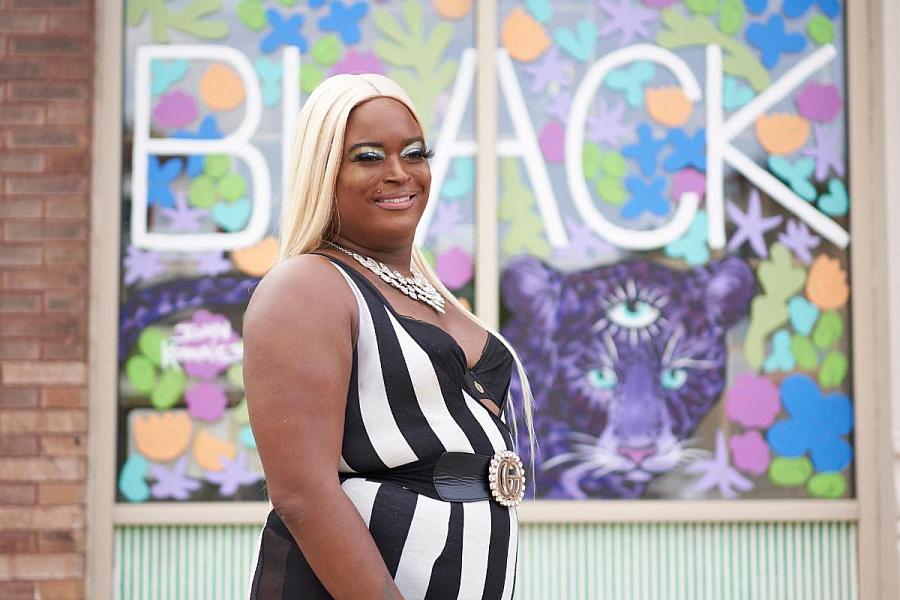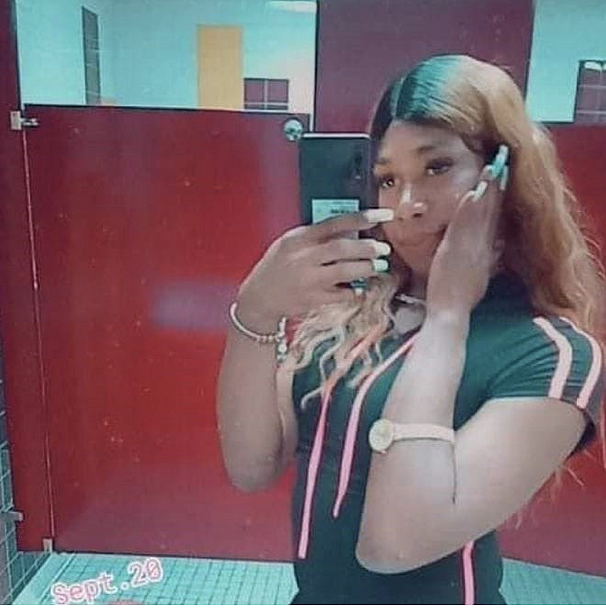The Health Divide: Black transgender people are not safe, and the story goes beyond deaths

Elle Halo, a Black trans woman, urges the media to do a better job of telling the stories of transgender people beyond just reporting on violence and deaths.
Photo via James Causey
As a Black trans woman, Elle Halo has experienced sexual violence from partners, family, people she called her friends, and people in the community throughout her life.
Most of the assaults were by people Halo, 34, knew and trusted.
When asked if she feels safe, the LGBTQIA+ advocate said: “I never feel safe. Most trans people of color never feel safe.”
Isolation is a crucial contributor to violence, and too often, people in the trans community feel like they have no safe place to go or anyone to turn to.
“When you are isolated and poor, you don’t have many options, and that’s when you are willing to accept things that compromise your safety,” Halo said.
Transgender people are four times more likely than cisgender people to experience violence. Still, Halo said the numbers fail to tell the complete story of violence, rape, sexual assaults, aggravated and simple assaults that go unreported or underreported against the Black trans community.
While the news doesn’t talk much about the sexual assaults transgender people experience, the media does report on transgender deaths.
But that’s where Halo has a problem. When it comes to telling stories about trans people of color, the media struggles to see “trans people as people.”
“We are more than just an obituary. We have lives, too. We come from families. We have friends who care about us, but those stories are never told,” Halo said.
By mainly focusing on the death of trans people and not telling fuller stories about trans people, Halo said the media creates a trust problem.
What Halo is referring to is what many African Americans and other communities of color say is a larger problem with the media. Journalists “helicopter” in when something terrible happens, like the death of a trans woman, tell the narrow story of the death, then leave. This approach offers no solution to the violence and transphobia, and does little to help people understand the community enduring — but not defined by — a given tragedy.
Even in death, Halo said, the media often causes harm to family and friends when the person is misgendered after death.
“When the media misidentifies a trans woman or man in death, what it says to our community is that we don’t matter,” Halo said.
As journalists, we must incorporate transgender people into our health reporting, and tell more complete stories about them as well. While we will continue to report on transgender people who are killed, we also need to tell stories of other disparities the trans community faces: homelessness, unemployment, discrimination, and the unjust treatment they often meet when seeking help from law enforcement.
Many transgender people are bullied
In November, a Milwaukee man was charged in the killing death of Chyna Long, a black transgender woman.
Chyna, 31, is the fourth identified Black transgender woman to die by homicide in Milwaukee since June 2022.
Antonio S. Currin allegedly shot and killed Long the morning of Oct. 8. According to the criminal complaint, Currin was seen standing outside a car talking to someone in the vehicle when a series of gunshots were heard. When police arrived at the scene, they found Chyna lying in the street with several gunshot wounds. She died at the scene.

Chyna Long (Courtesy Image)
No motive was given for the shooting. Currin is a convicted felon and should not have had a gun.
Chyna, a resident of Chicago, was visiting Milwaukee to provide comfort to her father, Jonathan Long, who was dealing with the death of his brother.
Jonathan said Chyna told him she was gay at the age of 18. By 23, Chyna identified as transgender.
Jonathan said he knew his child, born Jaquez Long in March 1992, was queer at an early age.
When Jaquez said he wanted to be referred to as Chyna, Jonathan said instead of being upset, he educated himself on the trans community so his child could live her best life.
Jonathan said his daughter shared his sense of humor, loved dancing, and had many of his traits. He described her as hilarious and a gifted dancer.
Growing up was difficult for Chyna. She was bullied in school, called homophobic slurs, and often forced to fight to defend herself. People even threw trash at her out of their cars. Once, when Chyna fell asleep on a train in Chicago, she woke up to men urinating on her.
The violence and transphobia against trans people is at a crisis level, according to a 2021 study in the American Journal of Public Health. Transgender people aged 16 or over are victimized over four times more often than cisgender people, the study found. One in four transgender women who were victimized thought the incident was a hate crime, compared to less than one in 10 cisgender women. And these numbers are almost certainly an undercount, since half of all violent victimizations were not reported to police.
“The results underscore the urgent need for effective policies and interventions that consider high rates of victimization experienced by transgender people,” said IIan H. Meyer, the study’s author.
Most trans deaths in 2022 were people of color
Halo said no matter how bad the numbers are for the trans community when it comes to violent crime and health disparities, the numbers are worse if you are Black.
In 2022, a record 41 transgender people were shot or killed nationwide, according to the Human Rights Campaign, a gay rights advocacy group.
The disparity is stark: Of the 41 transgender people killed in 2022, 83% were people of color, and 54% were Black transgender women.
Transgender people, and particularly trans women of color, are disproportionately affected by hate, and they don’t go to the police or family members because of stigma.
Halo said reporters can play a vital role in reducing stigma.
“There are a lot of stereotypes out there about trans women that are perpetuated by the media,” Halo said.
For years, transsexual people have been stereotyped as being “mentally ill” or “confused” about their sexuality. Trans women have been objectified as sex workers or only looking for sex. As a result, they are far more likely to be victims or sexual assault and rape.
Halo is working to change these stereotypical images. She is a member of SHEBA (Sisters Helping Each Other Battle Aids), a group of 20 African American transgender women that seeks to battle the isolation the women often face.
“If you are isolated from your family and friends, and you know you can’t turn to the police because they may not believe you were the victim of abuse, who do you turn to?” Halo asked.
The Human Rights Campaign report “An Epidemic of Violence 2021” found that between 2013 and 2021, nearly two-thirds of transgender and gender non-conforming people with known killers had their lives taken by an acquaintance, friend, family member, or intimate partner. Intimate partners specifically accounted for over a fifth of all known perpetrators — and this may likely be an undercount.
Halo also warned people against believing that most of the violence against transgender people comes from a result of trans people lying about who they are or trying to “fool” a man.
“Most of the men who date or go out with a trans woman know who he is going out with,” she said.
There are ways to include the trans community in news coverage
Journalists and media organizations should have beat reporters covering the gay community in the same way most cover crime, politics, government, business, and sports, Halo said.
While having a dedicated reporter to cover the gay community might be difficult for most news organizations due to our dwindling staff numbers, other things can be done to increase gay and trans visibility in the news.
Here are some things news organizations can do to cover the gay community better:
- Diverse media organizations are better news organizations, so it would make sense for an organization to have someone from the LGBTQIA+ community on staff; if not, the organization should find ways to fill that void.
- Accept letters to the editor or guest commentary from the gay or trans community on topics where they can lend their perspectives.
- Language matters. Check in about pronouns rather than making assumptions based on names or appearance.
- Invite members of the LGBTQIA+ community into the newsroom to hear their concerns and experiences over a meal. This builds trust and can lead to excellent story ideas.
- Include the gay and trans community in stories dealing with health care disparities. If you do a story on the rising homeless population, add statistics on what the trans and gay numbers show.
- Elevate Black trans voices in your reporting. Black trans people were a significant part of the Black Lives Matter Movement. They have always been involved in the struggle facing people of color and marginalized communities because they are a part of both. It’s essential to include them in these conversations.

